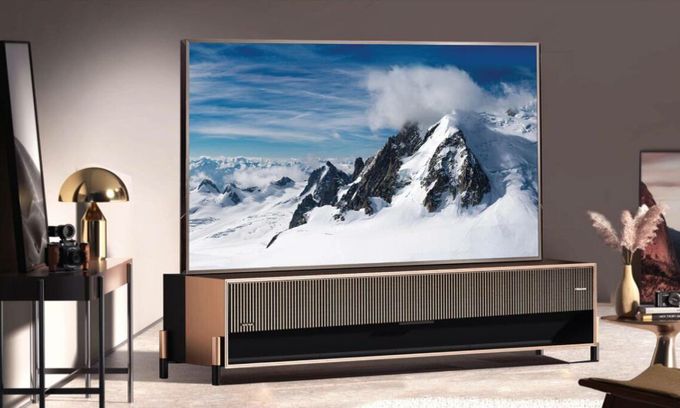Chinese giant Hisense hardly needs any introduction. For more than 50 years, the company has been successfully competing in the market, offering various household appliances. Today, the Hisense group includes Hisense Home Appliances Group Co., Ltd (washers, refrigerators, air conditioners, climate control systems), Hisense Visual Technology Co., Ltd. (TVs, laser projectors, displays, smartphones, chips, cloud services under Hisense, Toshiba and Vidda brands) and Hisense Intelligent Technology Group (medical equipment, etc). Its products are sold under the brands Hisense, Gorenje (kitchen appliances), Kelon (air conditioners), Toshiba (TVs), Ronshen (refrigerators) and others.
Hisense TVs
TVs and laser projectors are among its most successful areas. For more than 10 years, the company has been among the innovative leaders in this segment, offering ultra-innovative solutions. For example, in 2021, Hisense introduced 75U9DG TV with sensational Dual Cell technology.
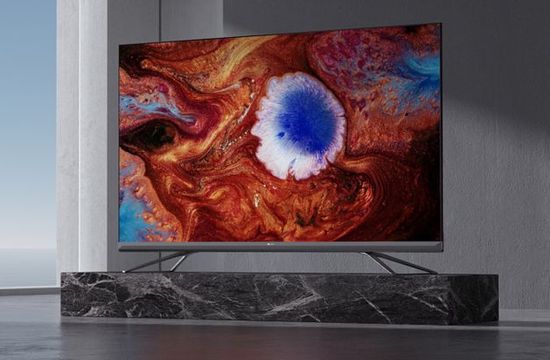
It uses an additional monochrome layer that adjusts the Local Dimming. In fact, its every pixel acts as a primitive Local Dimming zone. As a result, an additional 1080p monochrome matrix operates as FALD (Full-Array Local Dimming) with 2 million local zones. The launch price of this 75in model was only $ 1,200. Some experts predicted bright marketing prospects for it as an alternative to the more expensive mini LED backlight. Unfortunately, the development of this technology has not yet followed.
The marketing success of Hisense Laser TVs is even more impressive. Perhaps the physicist will smile ironically at this name. In fact, laser TVs are ultra-short throw (UST) projectors with an on-board TV receiver and a laser light engine. Today the company uses ALPD 3.0-based (laser + phosphor) or ALPD 4.0-based (RGB triple laser) light sources. Just in case, ALPD is an acronym for Advanced Laser Phosphor Display. However, any projector with a built-in TV receiver can formally be positioned as a TV with an external screen. But to be honest, most companies prefer the traditional name ‘laser UST projector’. However, this aspect is unlikely to be important for most consumers.
Today, the range of Hisense laser TVs is the widest on the market and the company continues to actively expand it. Last year the list expanded with L9H/L5H/PL1/PX1H models, announced 120LX 8K UST, and popular PX Pro series.

This year was no exception and at CES 2024 the company introduced five new models.
Major innovations
Lifestyle Canvas TV panel offers a similar concept to Samsung’s The Frame. Its matte coating harmonizes perfectly with any interior. When the TV is turned off, it performs a decorative function.
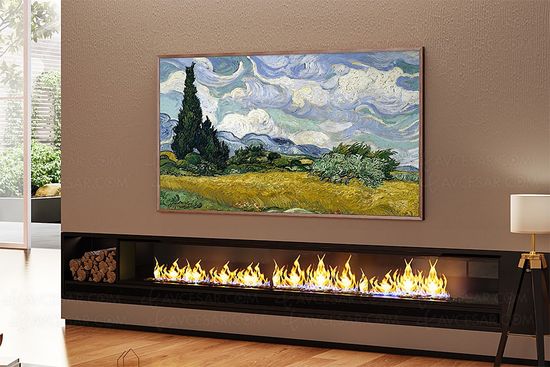
The company offers a wide selection of frames with different edging and wall mount with zero clearance. Hisense announces the start of their sales for the last quarter of 2024 with prices of ~ € 1,100 / € 1,300 / € 1,500 for 55″ / 65″ / 75″ models.
Laser TVs:
– the 8K Sonic Screen Laser TV has a gigantic sonic screen with an amazing sound area of 3.4 m², equipped with 100,000 sound units;
– Rollable Laser TV is a continuation of the popular rollable concept, which is implemented, for example, in LG Signature OLED R TVs.
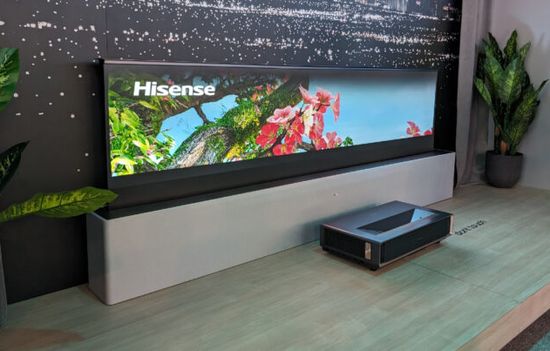
– Ultra Slim 4K Laser TV.
With a thickness and weight of only 1.57 cm and 7.5 kg/2.2 lbs, it’s ~70% smaller vs analogues;
– Ultra Black Screen Laser TV is an enhanced ALR screen and has a special anti-reflective coating based on micro- and nanotechnology, which reduces glare by ~50%;
– Dynamic Light Steering Laser TV with Barco Bright technology works as local dimming in TVs.
The automobile laser holographic AR-Heads-Up Display (HUD) transforms the windshield into an expansive holographic screen using holographic technology and proprietary panoramic TriChroma triple-laser projection.
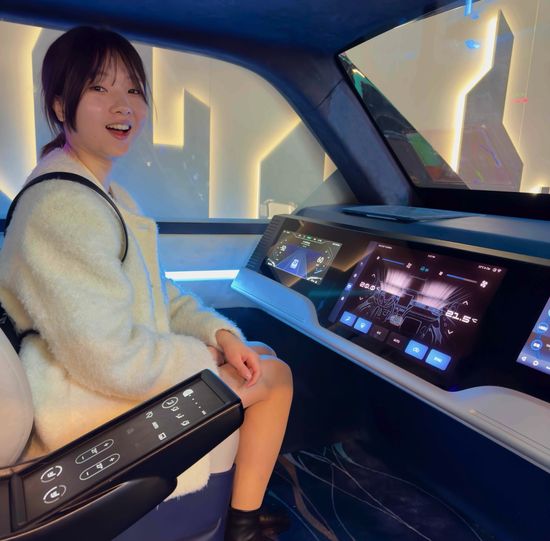
ConnectLife app works with home apps and services from Hisense, Gorenje, ASKO & ATAG brands and is compatible with VIDAA OS, forming a unified ecosystem.
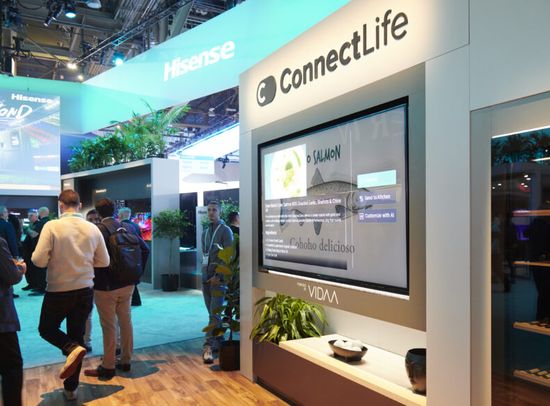
In Australia, the new platform will support an expanded range of refrigerators, dishwashers and washing machines.
Hisense TVs 2024
The range expansion includes premium UX and mid-budget U series.
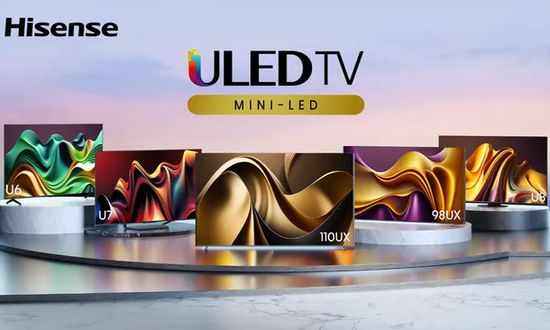
All 4K TVs use the innovative mini LED backlight with superb contrast. With the exception of the 120Hz U6N, the panels support 144Hz refresh rate. The UX series includes 110″, 98″ and 75″ models, the U8N and U7N offer 55″, 65″, 75″ and 85″ TVs. In fact, the 144 Hz is its main improvement compared to last year’s analogues.
The 100″ Hisense U76N replaces last year’s 100″ Hisense U8K and offers 144Hz gaming support and Wi-Fi 6e. It can be positioned between the U7N and the U8N.
The mini LED backlight of 110″ / 98″ / 75″ UX models uses over 40,000 / 10,000 / 5,000 local dimming zones. Of course, this is very impressive compared to the traditional ~1,000 zones for the 65″ size. As a result, the peak brightness of the 110UX and 98UX reaches an unprecedented 5,000 nits (cd/m²). But it’s only for about 1s, displaying only sudden bright flashes of light.
In addition to enormous brightness, the new UX has ultra wide color gamut (up to 95% for BT.2020 color space), and unprecedented viewing angle. But its glossiest coating does not cope perfectly with reflections. Moreover, image quality also depends significantly on control algorithms. But demo reels with a small number of dark areas do not allow us to correctly assess their effectiveness. Therefore, this aspect is still uncertain. The 110UX has 4.2.2ch speaker system, whose power exceeds 80W, and supports Dolby Atmos audio.
The flagship U8N uses up to 2,000 local zones (doubled vs last year’s U8K) and provides peak brightness of up to 3,000 cd/m².
The thickness of the thinnest 75UX does not exceed 14mm.
TVs 2024 Key Features
The US UX version supports 4K, but perhaps an 8K version of the 110UX will be available in Europe.
Hisense naming system:
– starting with their 2021 TVs, company uses ‘U’ letter in front of the model names for flagship ULED lineup, while the entry-level models have an ‘A’;
– a number after the letter corresponds to its place in the lineup;
– last letter represents the year (G – 2021, H – 2022, K – 2023, N-2024). For example, the Hisense U8K is a last year’s high-end model;
– R in the code is used for models with Roku TV instead of Android TV.
However, this classification is only valid for the American market and may differ in other regions.
Like Sony, Hisense primarily uses the popular Google TV with voice control via Google Assistant and Alexa.
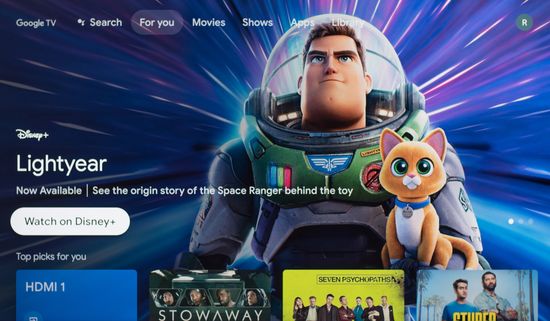
Of course, they has access to the Google Play Store. But models with Roku TV and Fire TV are also available in the USA.
The excellent value for money (last year’s 65″ Hisense U8K costs only $ 950) ensures the U8 series the place among bestsellers. Their 2024 N-version claims similar marketing success.
Hisense U8K vs U8N (65″):
– 1,600 nits (10% window in HDR Theater mode) vs 3,000 nits;
– 1,056 vs 2,000 mini LED zones.
In turn, U7N vs U8N
– up to 1,500 vs up to 3,000 nits – peak brightness;
– up to 500 vs up to 2,000 – local dimming zones;
– mini LED backlight vs mini LED backlight + QLED panel.
Both TVs have IMAX Enhanced, Game mode, support Wi-Fi 6e, ATSC 3.0 and 144Hz gaming for the latest PC cards. They work under Google TV in USA or Vidaa in Europe.
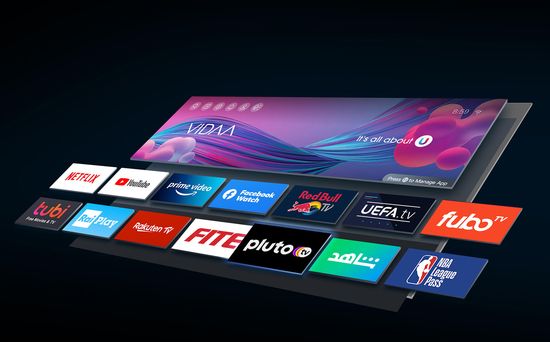
Conclusion
UX TVs
Pros
– unprecedented peak brightness up to 10,000 nits and superb contrast with 40,000 local dimming zone;
– color gamut up to 95% for BT.2020 or 100% for DCI-P3 color space;
– Google TV;
– new Hi-View Engine X CPU;
– 4.2.2ch Dolby Atmos speakers;
– ultra-wide viewing angles;
– 144Hz refresh rate.
Cons
– preliminary estimated price around $ 10,000 of 110UX;
– screen glare is noticeable;
– only two HDMI 2.1 ports.
Objectively, the stated specs of the UX series today are without competition in the segment of LCD TVs with quantum dot technology and with mini LED backlight. Indeed, enormous peak brightness, superb contrast with almost perfect blacks and ultra-wide color gamut (almost 100% coverage for BT.2020 and DCI-P3) provide premium image quality under any viewing conditions. In addition, TVs reproduce colors without distortion from almost any angle, which is important, for example, when watching baseball with friends. 100″ and 110″ models will be relevant for fans of huge screens.
Of course, UX TVs will compete with, for example, no less suprb LG OLED panels, new TCL models, Samsung Neo series or its S-models with a hybrid QG-OLED panel, etc. However, any competition mainly depends on the price and quality ratio. But in recent years, Chinese giants have been successfully pushing out their South Korean competitors, offering a premium level at quite affordable prices.
Of course, Hisens Laser TVs are also worthy of admiration. Considering the specs of the presented models, the company successfully maintains dominance in this segment.
This video introduces Hisense UX ULED X series of 4K mini LED Smart TVs.
